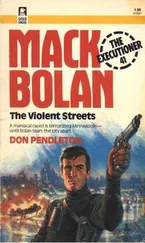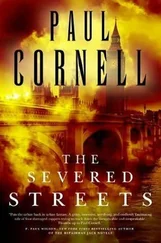Later that night, in the large interrogation room, James Baskerville-who would later agree to life plus twenty years at his arraignment-offers no excuses and readily initials each page of his statement of confession. “I’ve committed a serious crime and I should be punished,” he says.
“Mr. Baskerville,” asks Tomlin, “are there any more like you at home?”
And like Latonya Wallace, there are those rare victims for whom death is not the inevitable consequence of a long-running domestic feud or a stunted pharmaceutical career. Poor souls like Henry Coleman, a forty-year-old cab driver who picks up the wrong fare at Broadway and Chase; and Mary Irons, age nineteen, who leaves a downtown dance club with the wrong escort and is found cut up behind an elementary school; and Edgar Henson, thirty-seven, who is leaving an east side 7-Eleven when a group of teenagers announce a robbery and then, without warning, begin blasting away. The gang takes two dollars in food stamps, leaving behind a quart of milk and a can of Dinty Moore stew.
And Charles Frederick Lehman, fifty-one, a Church Home hospital employee whose last moments on earth are consumed by the carry-out purchase of a two-piece extra crispy dinner from the Kentucky Fried outlet on Fayette Street. Lehman doesn’t make the twenty feet between the restaurant door and his Plymouth; he is found spread-eagled on the rain-soaked parking lot, his wallet gone, the contents of one pocket spread across the asphalt, the chicken dinner lying in a puddle near his head. From inside the restaurant, another customer watched the brief struggle with three teenagers, heard the gunshot and saw the victim fall. He stared as one kid leaned over the stricken man, methodically rifled his pants pockets, then raced his two companions across Fayette Street into the Douglass Homes project. But the sixty-seven-year-old witness is nearsighted, and he can provide no description better than three black males. The dead man’s car is towed to headquarters for processing in the hope that one of the three kids touched the car and left a clear print. When that fails, there is only the anonymous caller with a white male’s voice who tells Donald Kincaid that a black co-worker had talked about watching three kids-one of whom he knew by name-running through the Douglass Homes after the shooting. But the co-worker doesn’t want to be a witness. Neither, for that matter, does the caller.
“He doesn’t have to give his name. He can just talk to me like you’re talking to me now,” pleads Kincaid. “You got to get him to call because I’ll tell you the truth, this is the only clue I got.” The voice on the other end promises to try, but Kincaid has been in homicide for a dozen years, and he drops the receiver into its cradle knowing that in all probability, he is waiting for a call that will never come.
SUNDAY, FEBRUARY 21
They take a page from the book written by the FBI’s psychological analysts, with Pellegrini and Landsman bringing the Fish Man down to the homicide office in the early morning-a time when a supposedly nocturnal suspect would be least comfortable. Then they do everything conceivable to make him believe that he is not in control, that their precision, their persistence, the sheer weight of their technologies, are certain to wear him down.
On the way upstairs to the interrogation, they walk him past the trace evidence lab. Normally locked on a Sunday morning, the fifth-floor laboratory has been opened and the equipment turned on by the detectives themselves. An elaborate show has been prepared to intimidate the suspect, to break him down before he even reaches the interrogation room. On one counter, the little girl’s bloodied clothes have been carefully laid out in a graphic display; on another table, her school books and satchel.
Hovering over the dead girl’s clothes, Terry McLarney and Dave Brown are dressed in white lab coats, their faces bathed in studious, professorial intensity. They seem to be amassing a collection of microscopic clues as they putter back and forth between the clothing and the lab equipment.
As Pellegrini marches the suspect past the lab windows, he watches the Fish Man intently. The old man seems to be taking it all in, but he offers no reaction. The detective ushers the suspect into the back stairwell and up one flight to the homicide office, through the aquarium and into the greater authority of the captain’s office. With its expansive desk and high-backed chair, its sweeping view of the Baltimore skyline, the office seems to add even more prestige to the process. Before beginning with the Miranda, Pellegrini and Edgerton make sure the Fish Man gets a good long look at the maps and the aerial photos and the impersonal, black-and-white shots of the dead girl’s face, taken by the overhead camera at the ME’s office-all of it arrayed on the bulletin boards and blackboards that clutter the room. They let him see his own face, an ident photograph, affixed to the same board as the child’s picture. They do every conceivable thing to make this, their best suspect in the death of Latonya Wallace, believe that they have or will soon have the physical evidence, that they are dealing from a position of strength, that exposure and punishment are inevitable.
Then they go at him. First Pellegrini, then Edgerton. Talking loud and fast, then whispering, then droning on laconically, then shouting, then asking questions, then asking the same questions again. Just outside the door, Landsman and the others listen to the assault, waiting for something to provoke the grizzled old man, something that will strike a chord and bring the beginning of the story up out of the Fish Man’s throat. One at a time the detectives leave the room, return, leave again, then come back again, each time bringing new questions, new tactics, suggested by those listening in silence just outside.
The confrontation is perfectly choreographed, so much so that many of the detectives allow themselves to believe that for once, the entire shift has pulled together around a single red ball, doing everything humanly and legally possible to squeeze a murder confession from a suspect. Yet the old man in the captain’s office remains unimpressed. He is a stone, a solid, stoic mass without fear, without any sense of distress, without any rage at being made a suspect in the molestation and murder of a child. He meets every argument with only abject denial and provides nothing more than the vague outline of his earlier statements. He will give no alibi for Tuesday. He will admit nothing.
In the early hours of the interrogation, Pellegrini defers once again to Edgerton, who has done this so many times before. With a certain unease, he listens to Edgerton lay everything they have in front of their suspect. Trying to convince him of their omniscience, Edgerton tells the Fish Man that they know about the little girls, that they told us how you could be fresh. We know about the old rape charge, Edgerton assures him. We know why you still don’t have an alibi.
Pellegrini listens to the veteran detective shovel his best stuff onto the old man’s lap with little effect and realizes, too late, that it isn’t enough. Hour after hour, Edgerton is spitting out words and phrases in that double-time New York cadence, but Pellegrini can almost feel the old man’s indifference growing. The detectives have their suspicions, they have probabilities, they have the mere beginnings of a circumstantial case. What they do not have is evidence: raw evidence, real evidence. The kind that breaks a man down to his smallest parts and makes him admit to that which no man will ever willingly admit. They’re in the room, firing their guns, and they don’t have it.
If they are right-if the Fish Man molested and killed Latonya Wallace-then they have only one or two chances to break him, one or two sessions to bring the man to a confession. Last Saturday was the first bite of the apple and now, with nothing else on their plate, they are wasting the rest of the meal.
Читать дальше












